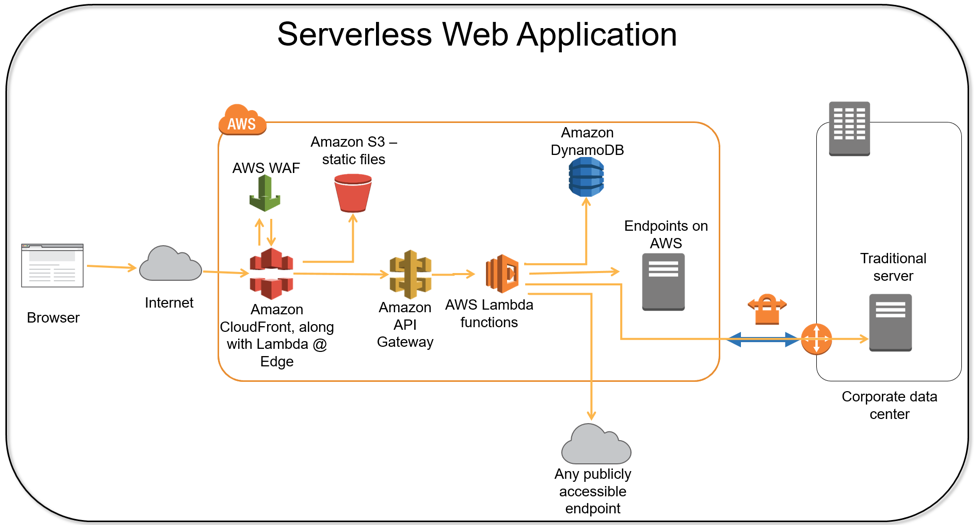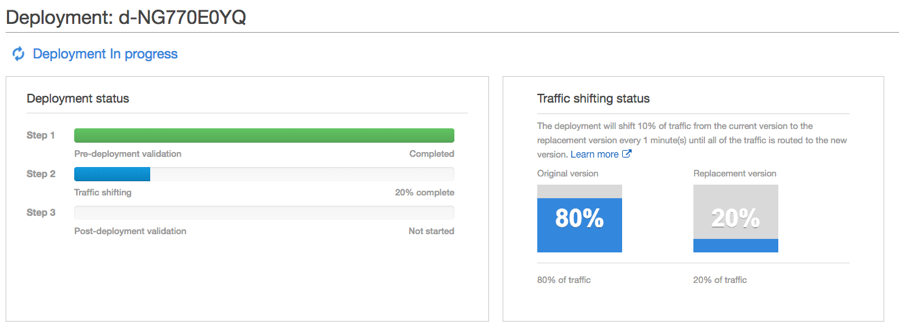AWS Compute Blog
Tag: AWS Lambda
Centralizing security with Amazon API Gateway and cross-account AWS Lambda authorizers
This post courtesy of Diego Natali, AWS Solutions Architect Customers often have multiple teams working on APIs. They might have separate teams working on individual API functionality, and another handling secure access control. You can now use an AWS Lambda function from a different AWS account as your API integration backend. Cross-account Lambda authorizers allow […]
Powering HIPAA-compliant workloads using AWS Serverless technologies
This post courtesy of Mayank Thakkar, AWS Senior Solutions Architect Serverless computing refers to an architecture discipline that allows you to build and run applications or services without thinking about servers. You can focus on your applications, without worrying about provisioning, scaling, or managing any servers. You can use serverless architectures for nearly any type […]
Control access to your APIs using Amazon API Gateway resource policies
This post courtesy of Tapodipta Ghosh, AWS Solutions Architect Amazon API Gateway provides you with a simple, flexible, secure, and fully managed service that lets you focus on building core business services. API Gateway supports multiple mechanisms of access control using AWS Identity and Access Management (IAM), AWS Lambda authorizers, and Amazon Cognito. You may […]
Introducing Amazon API Gateway Private Endpoints
One of the biggest trends in application development today is the use of APIs to power the backend technologies supporting a product. Increasingly, the way mobile, IoT, web applications, or internal services talk to each other and to application frontends is using some API interface. Alongside this trend of building API-powered applications is the move […]
Implementing safe AWS Lambda deployments with AWS CodeDeploy
This post courtesy of George Mao, AWS Senior Serverless Specialist – Solutions Architect AWS Lambda and AWS CodeDeploy recently made it possible to automatically shift incoming traffic between two function versions based on a preconfigured rollout strategy. This new feature allows you to gradually shift traffic to the new function. If there are any issues […]
ICYMI: Serverless Q1 2018
This post courtesy of Paul Johnston, AWS Senior Developer Advocate – Serverless Welcome to the first edition of the AWS Serverless ICYMI (In case you missed it) quarterly recap! Every quarter we’ll share all of the most recent product launches, feature enhancements, blog posts, webinars, Twitch live streams, and other interesting things that you might have […]
Using AWS Lambda and Amazon Comprehend for sentiment analysis
This post courtesy of Giedrius Praspaliauskas, AWS Solutions Architect Even with best IVR systems, customers get frustrated. What if you knew that 10 callers in your Amazon Connect contact flow were likely to say “Agent!” in frustration in the next 30 seconds? Would you like to get to them before that happens? What if your […]
Node.js 8.10 runtime now available in AWS Lambda
This post courtesy of Ed Lima, AWS Solutions Architect We are excited to announce that you can now develop your AWS Lambda functions using the Node.js 8.10 runtime, which is the current Long Term Support (LTS) version of Node.js. Start using this new version today by specifying a runtime parameter value of nodejs8.10 when creating or […]
Innovation Flywheels and the AWS Serverless Application Repository
At AWS, our customers have always been the motivation for our innovation. In turn, we’re committed to helping them accelerate the pace of their own innovation. It was in the spirit of helping our customers achieve their objectives faster that we launched AWS Lambda in 2014, eliminating the burden of server management and enabling AWS […]
Managing Cross-Account Serverless Microservices
This post courtesy of Michael Edge, Sr. Cloud Architect – AWS Professional Services Applications built using a microservices architecture typically result in a number of independent, loosely coupled microservices communicating with each other, synchronously via their APIs and asynchronously via events. These microservices are often owned by different product teams, and these teams may segregate their […]









